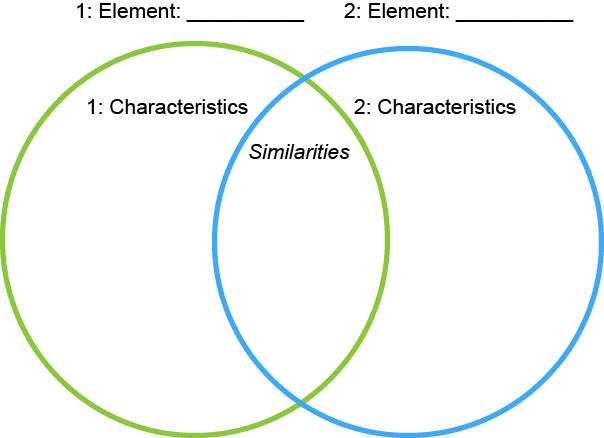Essential Details
| Interaction Type | People | Time | Stakes |
|---|---|---|---|
|
★ Learner-to-Learner ✖ Learner-to-Instructor ★ Learner-to-Content |
★ Individual ★ With Others |
★ Asynchronous ✖ Synchronous |
★ Low-Stakes ✖ High-Stakes |
Description
With a Venn diagram, students examine the differences and similarities between two things. Students can place individual characteristics of a concept, skill, or topic in the left or right sections. Similarities go within the overlapping section.
Sample Procedure
- Select two elements (concepts, skills, or topics) to compare and contrast.
- Provide an empty Venn diagram.
- Ask students to label each section with one of the elements.
- Ask students to fill in the non-overlapping sections with distinct characteristics.
- Ask students to fill in the overlapping section with similarities.
- Ask students to share their work.
Bloom's level
The level indicates this activity’s place within Bloom’s Taxonomy of learning (Cognitive Domain). Higher-levels contains lower-levels within it.
|
Level |
Action |
|---|---|
|
Sixth |
Create |
|
Fifth |
Evaluate |
|
★ Fourth |
★ Analyze |
|
Third |
Apply |
|
Second |
Understand |
|
First |
Remember |
Verb
Examine
Tools
- Canvas Discussion
- Canvas Assignment
- Microsoft PowerPoint
- Microsoft Visio
Teaching Goal
Practice New Skills or Concepts
Sources
Concept Maps. (n.d.). Retrieved November 15, 2019, from Learning Center website: https://learningcenter.unc.edu/tips-and-tools/using-concept-maps/
Graphic Organizers—Compare and Contrast. (n.d.). Retrieved February 6, 2020, from http://www.writedesignonline.com/organizers/comparecontrast.html#venn
